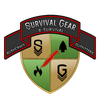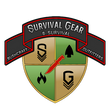Advanced Bushcraft Skills For Experienced Survivalists

Knowing general bushcraft skills is an amazing accomplishment on its own. Yet, there are skills that go far beyond fire starting. If you’ve mastered bushcraft skills for years, you may be interested in challenging yourself. With that in mind, don’t attempt any of these skills without lots of practice outside of the wilderness. Here are some bushcrafts skills for the most advanced survivalists.
Fishing
Bushcraft angling goes far beyond catching fish. Sometimes, bushcraft fishing means making a rod using natural materials and a basic fishing kit for extra necessities. Done correctly, a survivalist can successfully catch a fish using only a hook, line, and traps.
Some people go a step beyond that by solely relying on natural resources, but that should be reserved for the most experienced survivalists. Overall, fishing is a helpful skill that can provide powerful nutrition in case of emergencies.
Hunting and Cleaning Game
Similar to fishing, knowing how to hunt can provide a much more filling source of food if you don’t want to rely on foraging. With that said, hunting is not required to survive in the wilderness and should be reserved for those who want to take their skills to the next level. If you’d like to learn how to hunt, it’s important to research everything you can beforehand to avoid making risky decisions.
Camouflage
If you’ve ever watched a nature documentary, you may have seen animals like chameleons who hide in plain sight. Despite what it may seem, humans are just as capable of using camouflage. This doesn't mean buying pre-made camouflage equipment, this means creating your own based on what you already have. In a true survival situation, you wouldn’t always be prepared with camouflage outfits, so it’s good to know how to blend in using natural resources.
Trapping
Trapping goes well with fishing and hunting, making it a specialized skill for the most ambitious survivalists. You can learn how to set up different kinds of traps depending on the animal you’re hunting. The difference between hunting and trapping has to do with energy and attention. Trapping is much more stealthy and takes less energy, a precious commodity in the wilderness. In dire situations, knowing how to make snares and traps could save a life.
Tracking
Unlike wild animals, humans have not needed to use stealth for a very long time. Aside from “fight or flight,” many of our natural instincts have dissipated over time, and tracking is one of them. Thus, tracking is a skill that must be mastered by relearning it. This means identifying footprints, overturned rocks, and torn branches. Tracking can even be helpful for identifying sources of water since you’ll become hyper aware of your surroundings.
Advanced Shelter Building
Once you’ve mastered basic shelter building skills, consider taking it a step further. There are plenty of ways to utilize urban tools like tarps and paracord, but try to research ways to make shelters out of nothing but natural materials. This would mean making your own rope, constructing a roof out of wood, or using nearby branches and moss. It may seem simple, but it takes more expertise than you’ll realize.
Tool Crafting
Bushcraft can get very advanced, even down to the tools you use. For survivalists who feel up to the challenge, learning how to make your own tools with nothing but the materials around you can be a very difficult task. These tools can be utilized with some of your other skills like hunting, fishing, and shelter building. Some examples of common survival tools that can be made by hand include snares, bow and arrows, and traps.
Handcrafted Rope
Making your own rope isn’t required for bushcraft. Many survivalists feel comfortable using paracords and pre-ordered rope. But, if you feel experienced enough to take it to another level, you can make your own rope by hand.
We only recommend this for the most experienced survivalists and strongly suggest you practice making ropes at home before attempting to go into the wilderness without it. With that said, if you can make a rope using nothing but plants and greenery, that is a celebratory accomplishment.
Bladed Tool Maintenance
You may not even think twice about it, but bladed tools require regular maintenance to keep them sharp, strong, and durable. This means sharpening your knives regularly, storing them in safe locations, and understanding how to properly use them. It’s important to know how to use your bladed tools to prevent injury and damage. Even intermediate survivalists should consider learning how to take care of their knives before going on any bushcraft expeditions.
Identifying Wildlife
Identifying wildlife like birds and rodents can be an entertaining way to pass the time. However, it can also be vital for survival. A chipmunk may not mind a human visitor, but a bear is not going to be as welcoming.
Noticing signs of other aggressive wildlife like snakes, mountain lions, and moose may save your life. Remember, you’ll be in their territory, so it’s important to respect their space. This means knowing what to do if you’re approached, how to stay calm, and how to survive an attack.







Leave a comment